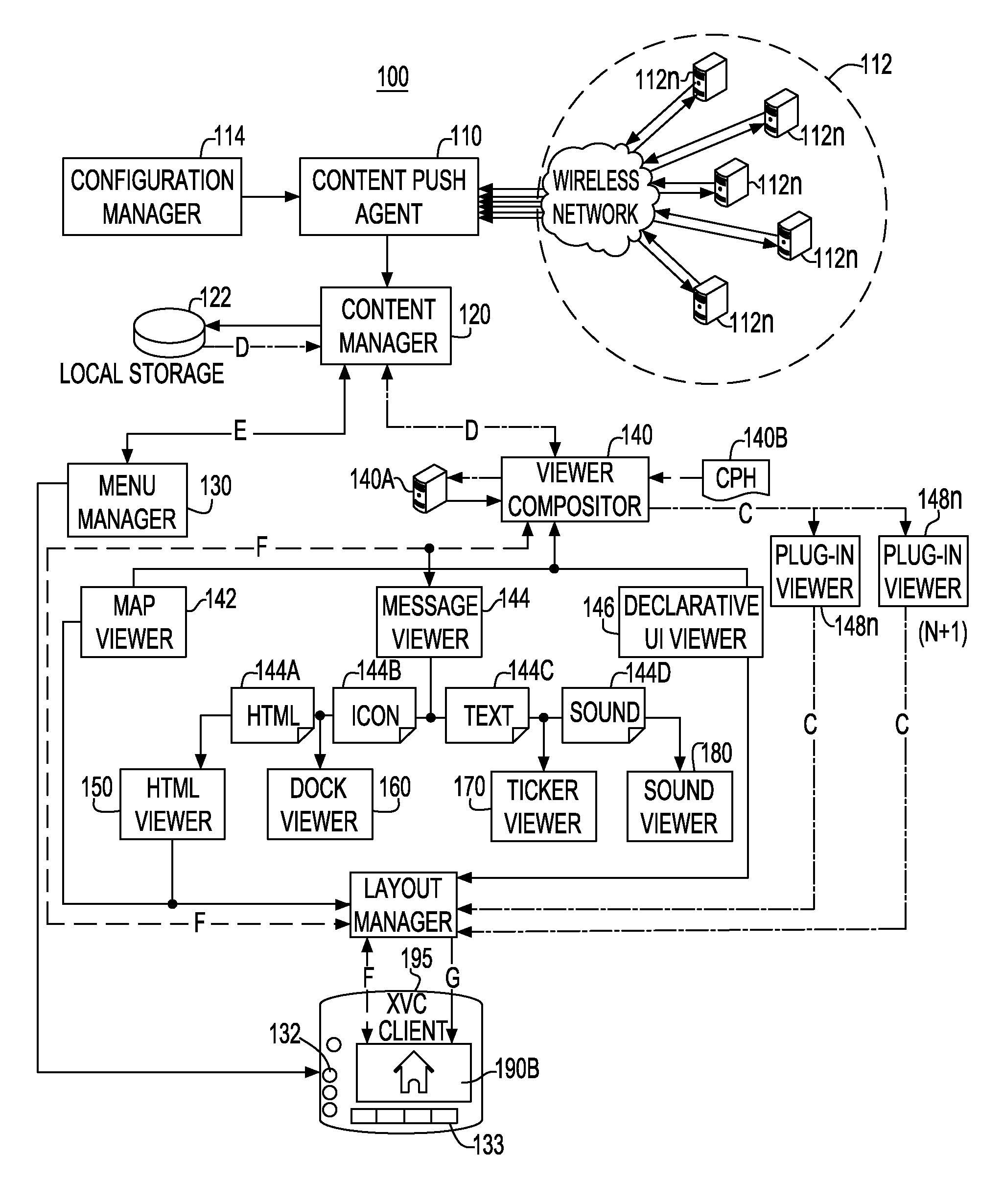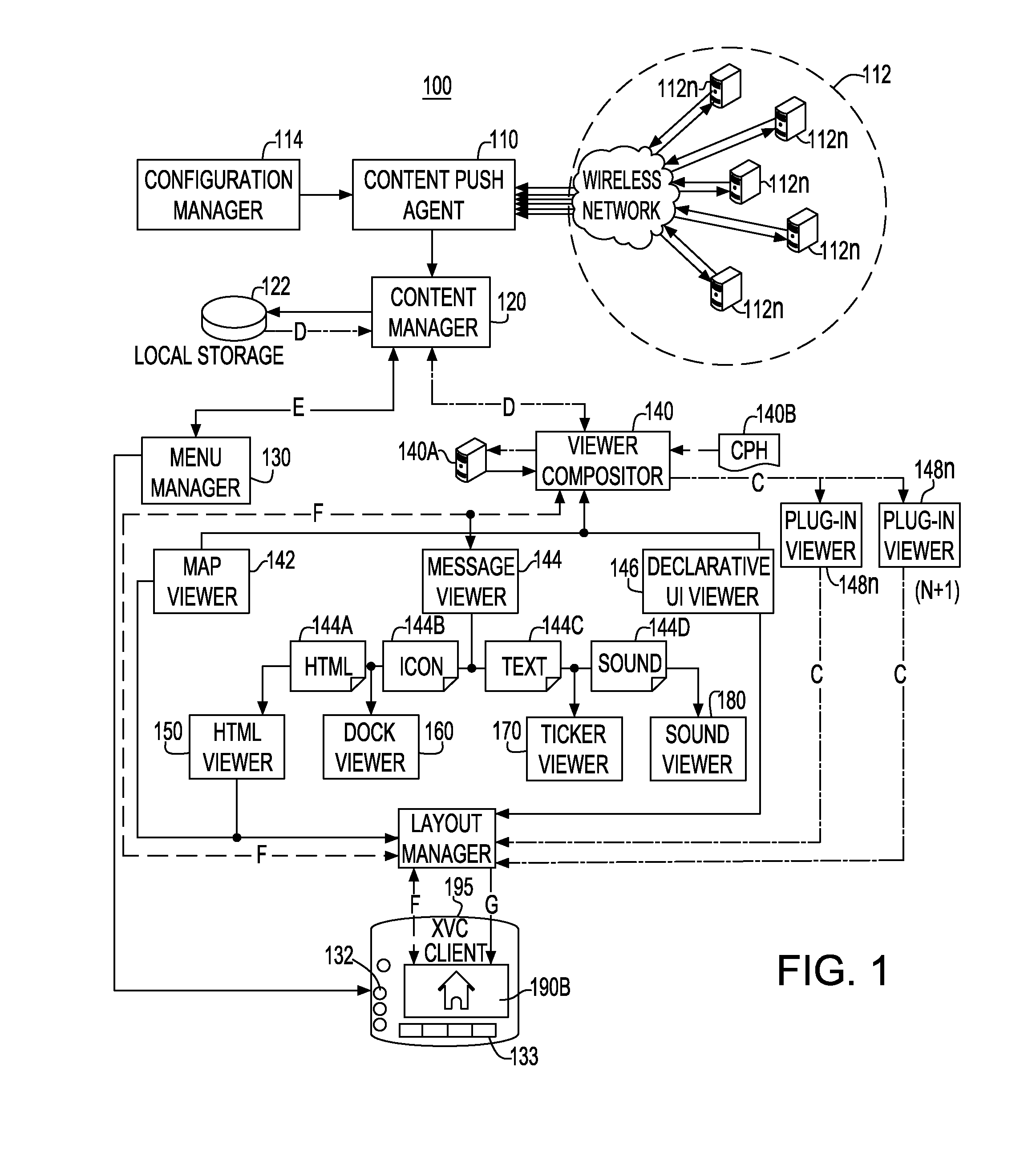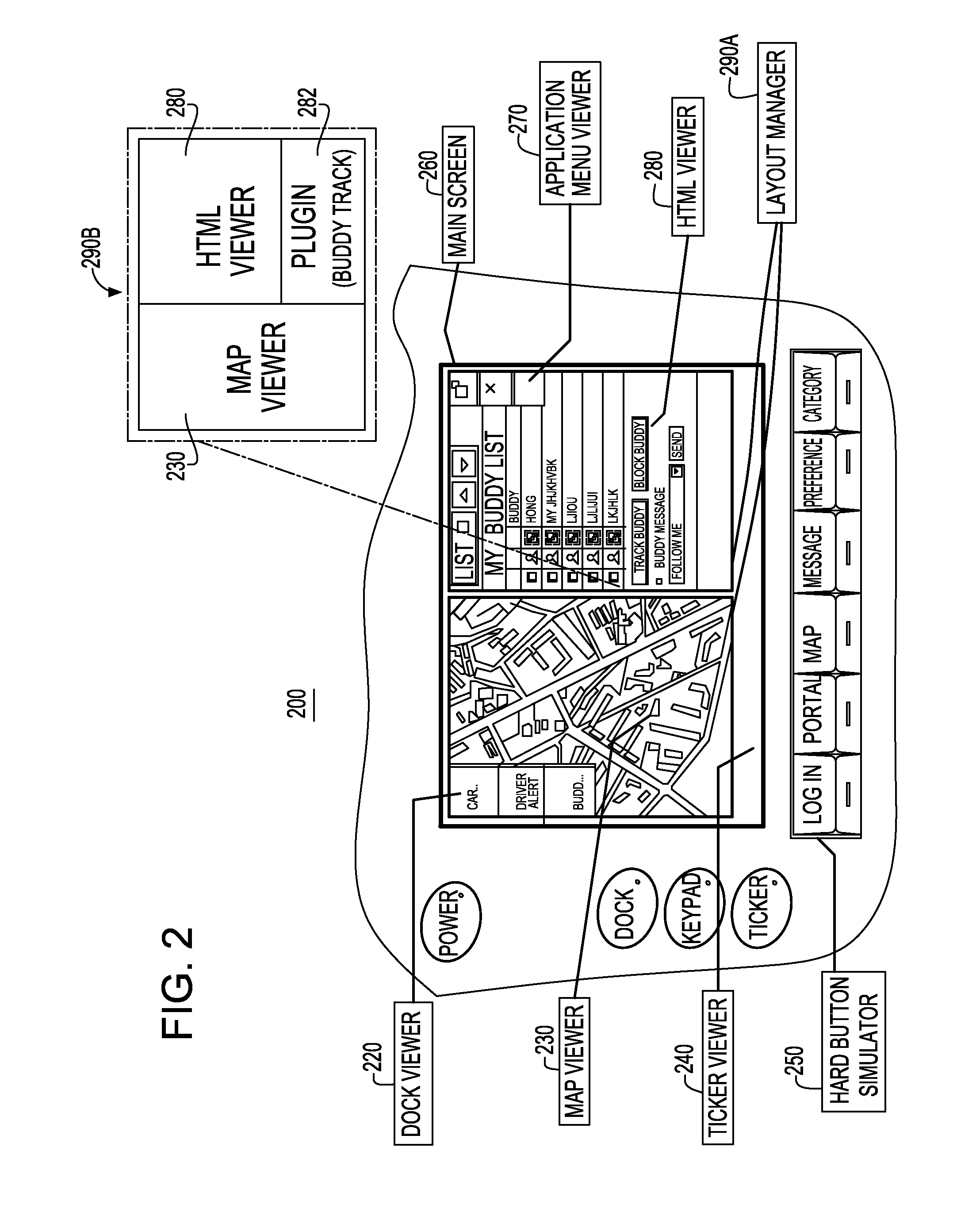Composition-based application user interface framework
a user interface and composition technology, applied in the field of telematics services, can solve the problems of inability to provide interaction between multiple telematics services, inability to display multiple telematics services at the same time, and inability to meet tourist scenarios, so as to avoid distracting drivers
- Summary
- Abstract
- Description
- Claims
- Application Information
AI Technical Summary
Benefits of technology
Problems solved by technology
Method used
Image
Examples
Embodiment Construction
[0022]After providing an overview of the present invention's novel document-oriented model for delivery of telematics services to present interactive user interfaces on in-vehicle clients, the architecture and operation of the present invention will be disclosed in reference to the figures.
[0023]The present invention discloses a novel document-oriented model for delivery of telematics services to present interactive user interfaces on in-vehicle clients, which are hereafter referred to as “XVC,” the “XVC model” or “XVC client” (eXtensible Viewer Composition). XVC has three primary characteristics: (1) it supports a document-based application model; (2) application user-interfaces are compound documents, each element addressing a different viewer (“viewer composition”); and (3) the user interfaces of multiple applications are composed into a single glanceable user interface on the client (“application composition”) for ease of use and expediency.
[0024]XVC's Document-Oriented Applicat...
PUM
 Login to View More
Login to View More Abstract
Description
Claims
Application Information
 Login to View More
Login to View More - R&D
- Intellectual Property
- Life Sciences
- Materials
- Tech Scout
- Unparalleled Data Quality
- Higher Quality Content
- 60% Fewer Hallucinations
Browse by: Latest US Patents, China's latest patents, Technical Efficacy Thesaurus, Application Domain, Technology Topic, Popular Technical Reports.
© 2025 PatSnap. All rights reserved.Legal|Privacy policy|Modern Slavery Act Transparency Statement|Sitemap|About US| Contact US: help@patsnap.com



